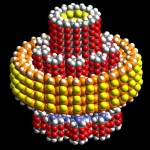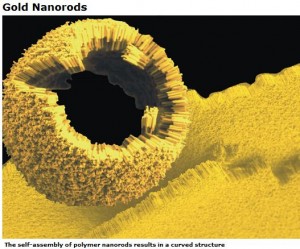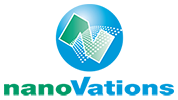With nanotechnology being reported to have an impact on every industry on the planet within the next 20 years there is no question of reasons why both industry and governments globally are racing to invest billions of dollars anually towards this revolutionary discovery. Yet there must be a level of caution used when approaching the rapid pace of advancement and utilization of Nano-based technologies. This is dependent on several factors, some of which may include, the application, the nano-particles used, the size of the particles, measured levels of potential cross contamination impacts from the nano-particles on the environment and humans.
There is so much conflicting information available about Nanotechnology, but there is limited access to centralized scientific data to properly determine clear opinions and decisions of overall impacts accumlatively. It is the responsibility of both industry and regulators (globally) to firstly; establish a standardized risk assessment criteria and secondly; to agree that current environmental policies must be contemporaneous with emerging technologies. The building from bottom up technology has presented an incredible opportunity to create environmentally inert and entirely reuseable materials. It is my belief that the entire lifespan of nano particles should be considered and percieved as stand alone elements or chemicals, as nano particles often react with completly different results.
Although we have been surrounded by natural nano particles since the earth’s creation, we have only had approx. 20 years of researching an understanding of what the potential beneficial uses are and we must also be researching what the long term effects are on the environment and humans. This is not an option but a moral obligation to make every effort to centrally gather this research information (proprietary formulations exempt) and establish some form of unified guidelines for industry to utilize, and a starting point for regulators to assist in not only monitoring but as well the development of this revolutionary technology. Regardless of how arduous of a task this is, this must be a unified effort by all stakeholders now and in the future. This scientifically verified research, should be approached from a reasonable perspective for both industry and regulators, complete with checks and balances for all stakeholders.
With nanotechology basically in it’s infancy and our current knowledge of other sciences, has allowed an unprecidented opportunity to integrate and utilize this techology to it’s maximum long term benefit for our planet and our people.
The above personal comment is from Dave Donovan (President NanoVations Inc)
International Risk Governance Council Policy Recomendations (Link)
Comment from U of M Risk Science Centre (Link)
_________________________________________________________________________________
An excerpt from SciDev Net
Nanotech for clean water: New technology, new rules?
Malini Balakrishnan and Nidhi Srivastava 6 May 2009 |
Emerging nanotech for purifying water at this stage should be regulated with existing laws, say Malini Balakrishnan and Nidhi Srivastava.
Around the world, dwindling water supplies and deteriorating water quality are driving innovations in water treatment technologies. Nanotechnology is a key player since it can improve applications ranging from large-scale seawater desalination systems to community based arsenic removal units to household water filters
Because of nanoparticles’ special properties and potential applications in energy, health and agriculture, advocates of nanotechnology sometimes perceive it as a ‘silver bullet’ that will fix a spectrum of development problems.
Others argue that nanomaterials may be the next asbestos, with unknown health and environmental impacts, and that they should be strictly regulated. Such concerns are particularly relevant for developing countries, which have large potential markets for nanotechnology-based water treatment but may not have the capacity to cope with any unforeseen adverse effects. New regulations might seem the obvious answer, but we should look before we leap.
A new set of problems
The possible health risks from ingesting or being exposed to engineered nanoparticles is leading the push for new regulations.
There is also anxiety over how used filters and media containing nanomaterials might affect the environment. If nanotechnology becomes widely used, the disposal of nanomaterials will be difficult to contain, especially where they are used in household and community-level applications. The situation would be akin to mobile phones. Unless the supplier takes responsibility for collecting and managing used nano-based products — for example while servicing water treatment systems — the material will most likely end up in local dumpsites and landfills.
Unsuspecting developing countries could suddenly face a completely new set of pollution problems. In water purification applications, the nanomaterial is typically coupled to, or embedded in, other materials like filters that keep it trapped. But this may not always be the case. For example, silver nanoparticles used as odour neutralizers in fabrics have been known to leach after soaking in water.
If nanomaterials find their way into water bodies, they could affect population and food dynamics, harming aquatic life. Studies in the United States have shown that if nanoparticles end up in sewage sludge subsequently used as fertilizer, they could damage plant growth.
New and separate regulations for using nanotechnology in water purification may seem like a panacea for managing these risks, but this is impractical at this stage for two reasons.
First, we don’t yet know the full risks of using nanotechnology to purify water, so regulating for them is difficult and fixed rules might quickly become defunct as new risks arise. Regulation of nanotechnology in its broader senses still in its infancy — usually emerging as a reaction to fast-paced technological developments. While risks are still being identified and defined, our priority should be to ensure that existing regulations have the flexibility needed to address new threats as and when they become known.
The regulatory regime for water treatment must anyway be flexible enough to cope with all concerns — whatever the technology or raw materials used. Imagine that we carve out a separate set of regulations for nanotechnology in water purification. Tomorrow, if a new technology with new properties is developed for treating water, we would need a whole new set of regulations. Such short sightedness would restrict the law’s ability to respond to new and emerging risks, and also create administrative overlaps.
Creating new rules for nanotechnology in water treatment is also undesirable for a more practical reason. Water treatment as a whole encompasses a number of different aspects, including treatment schemes, supply networks and waste disposal. Most of these are already governed by multiple government bodies and regulations. For example, in India, waste management is governed by hazardous materials rules, municipal solid wastes rules, and the Water Pollution Act. Adding new regulations to this list, for instance to control how filters containing nanomaterials are disposed of, will do little beyond creating confusion. Moreover, micro-segregation of waste would be difficult due to overlapping rules.
Responsive rules
Making regulation responsive to new challenges does not necessitate new laws. Instead, precautionary principle (caution in advance) — already used in environmental regulation — can be extended to nanotechnology applications. The existing plethora of regulation for occupational and environmental health and safety can be amended to recognize that nanomaterials have distinct characteristics.
For example, requirements for labeling that indicates the quantity and type of nanomaterials used in any product, and recognizing waste containing nanomaterials as potentially hazardous, can help people take adequate precautions when handling and disposing of these. Similarly, standards for permissible limits of different substances in drinking water can be updated to reflect the concerns around nanotechnology.
Fostering policymakers’ and regulators’ will and capacity to understand and address the challenges of nanotechnology is more important than new regulation. Greater inter-ministry and department coordination, information exchange and capacity building is needed. After all, any regulation is only as good as the sincerity and success of its implementation.
Malini Balakrishnan is a bio-chemical engineer and Nidhi Srivastava is a lawyer. Both work at the Energy and Resources Institute (TERI), New Delhi, India. These are their personal comments. The authors acknowledge the IDRC supported project on capability, governance, and nanotechnology developments in India that provided the background for this article. 
We at NanoVations Inc. would appreciate and encourage any comments or concerns.
Please drop us a line!


